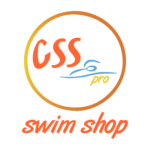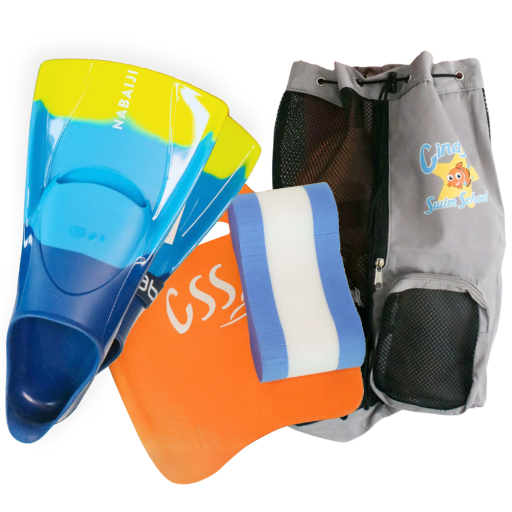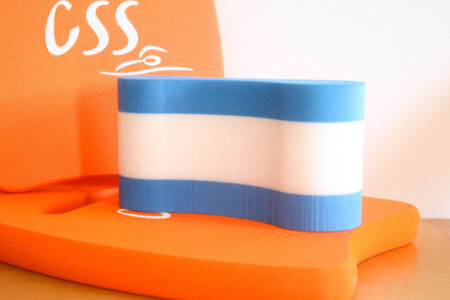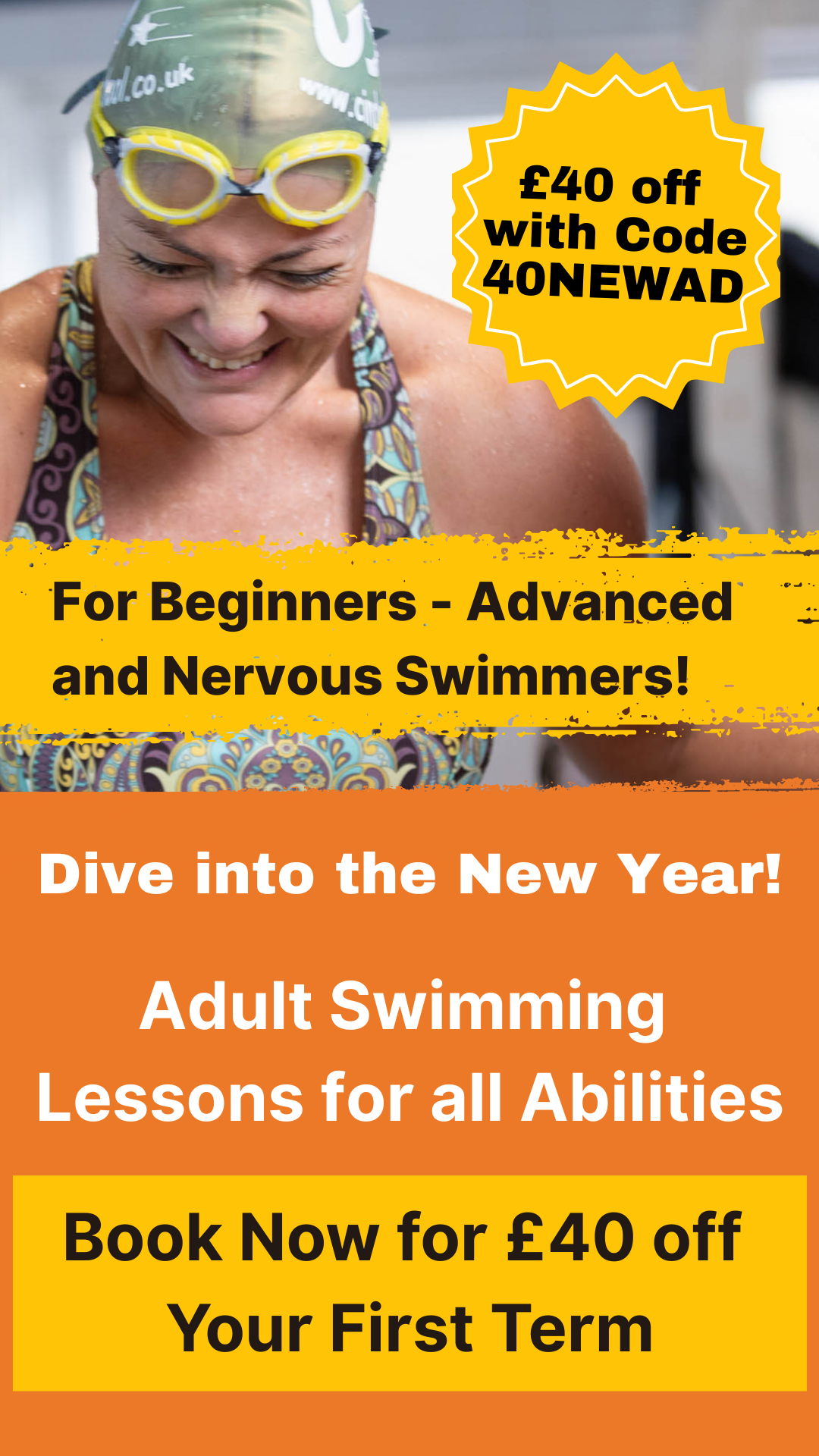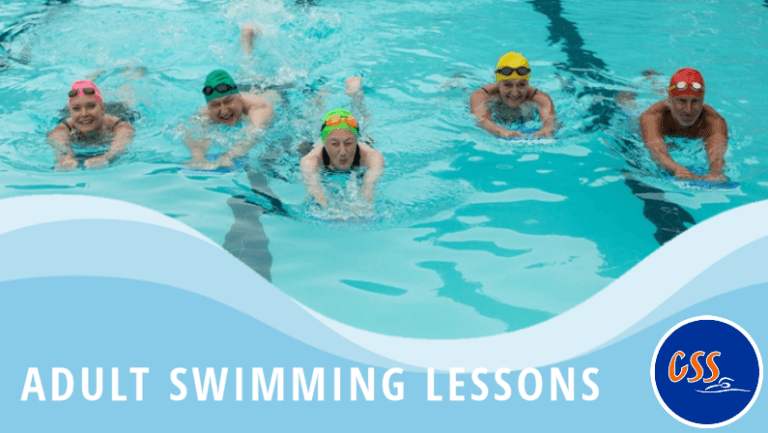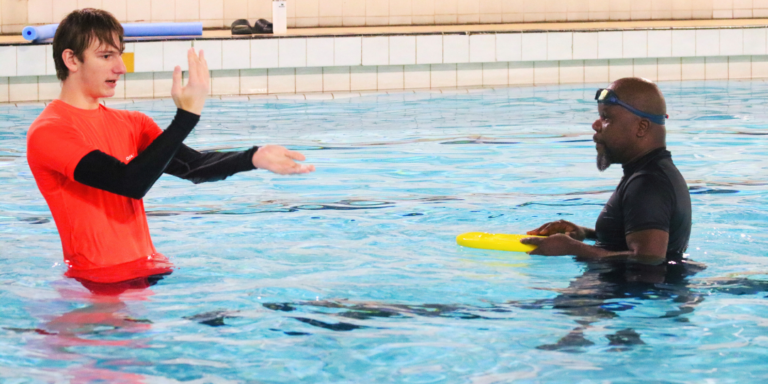Learn to Swim as an Adult: What You Need to Know
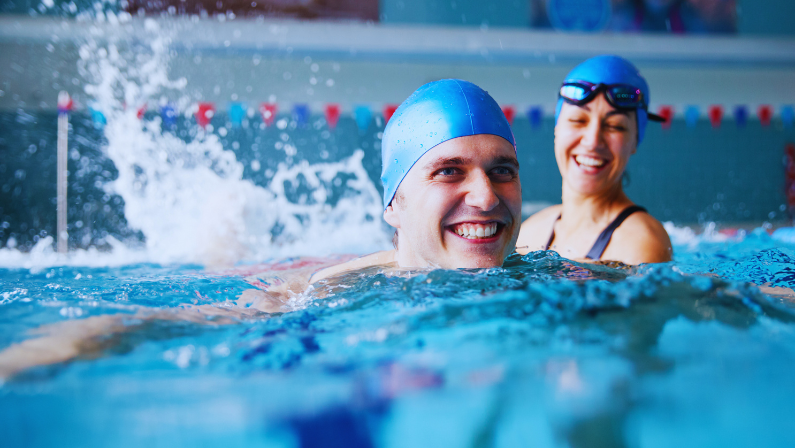
Coming from South Africa, my childhood and adult years were filled with endless ways to enjoy swimming – activities like surfing, wakeboarding, and snorkeling (as well as just swimming!) The joy that comes from swimming is hard to explain and I’m passionate about teaching adults how to swim so they can experience this too.
Frequently Asked Questions about Adult Swimming
Click the question to jump to our answer!
- Why learn to swim as an adult?
- Is it too late to learn how to swim as an adult?
- Can you teach yourself to swim as an adult?
- What if I’m overweight? Can you be too big to learn how to swim?
- How easy or difficult will learning how to swim be?
- What equipment do I need and what should I wear?
- What should I expect at my first swimming lesson?
Why Learn How to Swim As An Adult?
Swimming is healing, relaxing and fun! It’s good for you physically, mentally, and emotionally. And it isn’t just me who thinks that swimming is great! There is an abundance of research that proves the multiple and vast benefits of regular swimming.
If you’re convinced by the data but still have questions, read on for the everything you need to know.
Is it too late to learn how to swim as an adult?
In a word, no. The oldest person I ever taught how to swim, was a lovely lady who was 87 years old. Throughout her life she had never been taught how to swim. Her husband, a keen swimmer, loved all things water and ensured their children learned how to swim too. This left Mum sitting on the beach or by the poolside, watching them have fun for many years. On her 87th birthday she decided that she was going to learn how to swim before she died and so our journey began.
It was an amazing journey because I taught her how to swim a confident, solid front crawl (freestyle) and backstroke in just two weeks! The lady was a natural swimmer!
How this made her feel, you can imagine. She was so proud to be swimming at last, but also regretful that she had waited so long. I’m sure her advice would now to be grab the chance and learn while you can!
Not every swimmer’s journey will be as smooth or easy or fast. But, it doesn’t make it any less worthy! Rest assured, swimming is not as difficult as you may think.
Can you teach yourself to swim as an adult?
I suppose you could if you know where to look online and have the time to find and understand the exercises. You could read books that explain the reasoning and logic behind swimming techniques and then fit it all together. You would also need to equip yourself with the necessary tools to achieve your goals.
What you can’t provide yourself is the experience and knowledge that comes from a teacher, who can help you avoid picking up bad habits.
What If I’m Overweight? Can you be too big to learn how to swim?
Don’t worry about being too big, water is wonderfully buoyant. The largest person I ever taught was 6 foot 4 and weighed 120 kg and was absolutely terrified of water! He had never walked into a swimming pool before and felt unstable on his feet. He instinctively grabbed me and threw himself around me like a teddy bear. Thanks to the buoyancy of water, I managed to hold him and show him that he was perfectly safe. From that first lesson, we built a strong, solid foundation of understanding how water works and how his body fitted in that space. Within a few months he could happily swim a few basic strokes.
How easy or difficult will learning how to swim be?
This is a difficult question to answer, learning is individual, where you come from, your understanding of water and if you have had anything like a near drowning experience, will affect how you learn to swim.
What I can say is, swimming itself isn’t overly complicated. The basic foundations of swimming are essential to being able to swim properly and to being able to enjoy it. Once you have learnt those as a swimmer, the rest is much easier.
If you have had negative experiences around water, then please do share that with your teacher. You will be helping them to support you, so that you can feel more safe and confident.
Aside from how difficult or easy learning to swim may be for you, you should be prepared to invest in several weeks of lessons at least. Some people take weeks to learn to swim, other people take months before they reach the competency they want to achieve.
What equipment do I need and what should I wear?
What you need for swimming lessons may vary depending on the swim school you go to, but these are what we think are essential:
- A swimming costume: Make sure that the swimming costume is comfortable and stretchy, especially for mens’ shorts. Men’s swimming trunks should allow free movement and the ability to climb in and out of swimming pools without restriction. If swimwear is too loose it can drag and make the swimmer feel heavy. Loose swimwear may also get in the way of being able to swim properly.
- A good swimming cap and goggles: If you want to swim properly, the reality is that your face will need to be in the water for a period of time. Goggles which are comfortable to allow you to see where you are going are essential. A swimming cap keeps the goggles in place, keeps your hair dry, and helps with streamlining. We sell ones we recommend because we know they work, but we are also happy to recommend others
Zoggs Predator Goggles
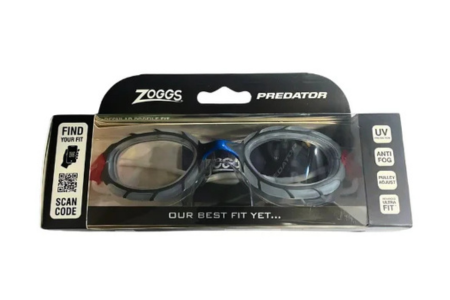
£25.00
- Kickboard and flippers (fins). These provide stability and support for beginners, help improve stroke techniques through various exercises, promote proper body position, and offer extra buoyancy and speed. Your swimming teacher will advise if and when you need to invest in a kickboard and flipper kit.
Adult Kickboard

Kickboards are an important swimming aid. They initially teach proper body position and give aid for weaker swimmers, for more advanced swimmers they are a vital tool in stroke correction. This kickboard is designed from an adult frame.
£16.00
Flippers

£25.00
- Noodle (Woggle): For extra nervous swimmers, a foam noodle offers additional buoyancy and support. It is particularly helpful for practicing independently, providing the support a teacher would typically give when holding their student. With our lessons, your teacher will have their own noodle at first, and will advise if you need your own.
Noodle (aka Woggle)

£10.00
What to Expect at your First Swimming Lesson?
At the start of your first swimming lesson, I recommend a quick chat with your swimming teacher. Fill them in on your swimming background and any experiences, such as near-drowning incidents. This is also a good opportunity to communicate your goals for the lessons, helping your teacher guide you over the sessions to achieve them.
Your teacher in turn will inform you on what to expect from your first swimming lesson and going forward.
Once you are in the pool, your teacher will teach you the most important rule of swimming: breathing. Proper breathing is essential to being able to swim properly and enjoying the process. Your teacher will also introduce the basics of kicking and floating on your front and on your back.
Our teachers are in the pool and they hold swimmers to give as much support as needed, especially whilst swimmers are finding their swimming tails and building confidence in those first few lessons.

